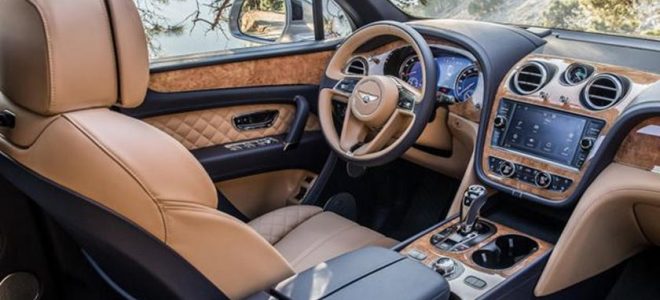With the coronavirus being a stealthy virus that sticks to surfaces, being extra clean and
hygienic can help you stay safe during the current health crisis.
To avoid getting the disease, everyone is advised to wash their hands frequently and properly,
particularly after touching public or common surfaces outside the home. In the absence of
water and soap, you have to clean your hands with sanitizer and rubbing alcohol or use
disinfectant wipes or spray.
But during the COVID-19 pandemic, it’s not only your hands that you need to keep clean. Since
the coronavirus sticks to surfaces, your car can also harbor the virus once you climb in after
going out. Your vehicle can become a hotbed for this particular microbe and other germs,
especially if you don’t sanitize the interior frequently.
If you want to ensure your vehicle is germ- and virus-free and safe for you and your family to
keep using, follow these tips shared by a team of automotive experts from DT Service Centre:
1. Sanitize high-touch areas of your car frequently
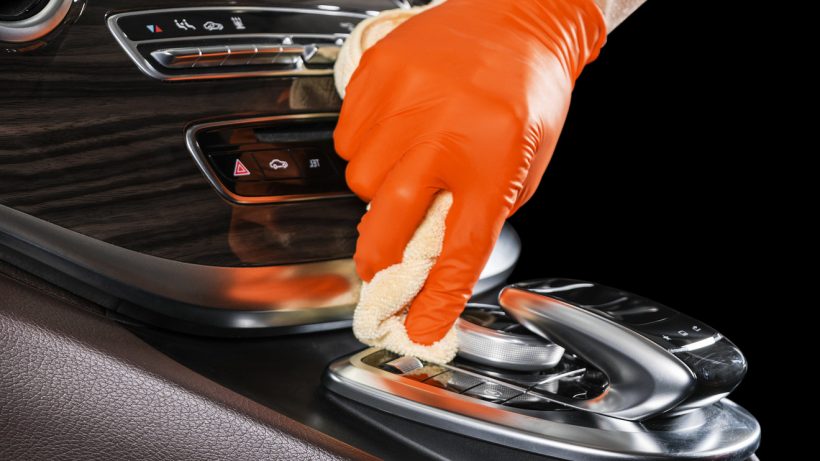
Source: marketwatch.com
The door handle is one of the parts of your vehicle you touch frequently. As much as
possible, sanitize these often with disinfectant wipes before touching them. By doing
so, you can prevent transferring viruses and germs from the exterior of your car to the
interior.
Sanitize the handles on all passenger doors, too, especially if others ride with you often.
Additionally, disinfect the steering wheel before driving. You can use disinfectant wipes
to clean and sanitize it. Don’t forget the shift lever, window and mirror switches, seat
belt fasteners, and all knobs and switches that you frequently touch.
If you are using a disinfectant spray, ensure you treat the surface completely and wipe it
down with a microfiber cloth. Throw away the cloth after each use.
Lastly, use a hand sanitizer or antibacterial wipes to clean your hands. Once you have
access to water and soap, wash your hands thoroughly.
Keep in mind, though, that using disinfectant wipes or sprays is only a start. To keep a
germ- and virus-free healthy car, you need to give it a more thorough cleaning.
2. Vacuum your car
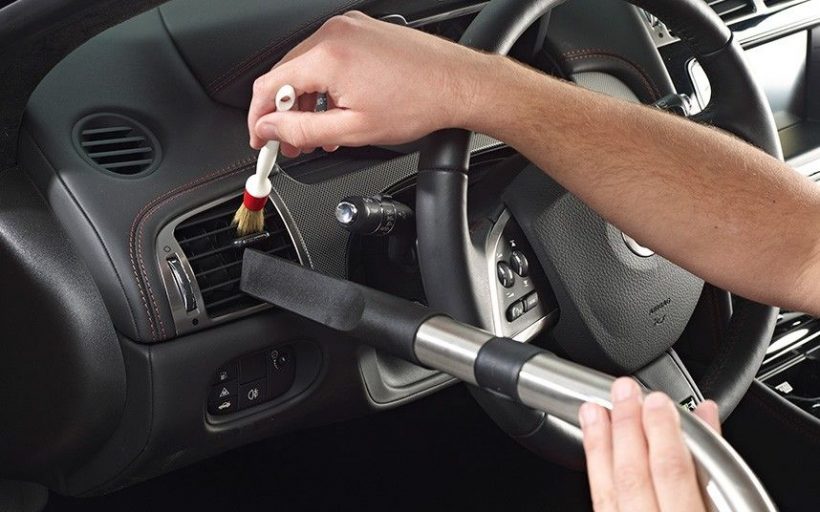
Source: carbikegear.com
If you won’t use your car for several days, prevent dust, pollen, and germs from settling
inside by vacuuming the interior thoroughly. This will help keep bacteria and viruses at
bay.
Start by using the dust brush attachment to remove the dust from the dashboard and
crevices. Next, go over the other parts of the interior, including the seats, back shelf,
and boots.
Make sure you use the right attachment for vacuuming certain parts. For instance, you
need to use the soft brush accessory to clean the seats. By doing so, you get rid of the
dust and debris and, at the same time, avoid damaging the fabric.
Lastly, move on to the carpets and mats. Before vacuuming, remove the mats and
shake them off to get rid of loose dirt and other debris. Next, use the vacuum hose to
clean the grooves of the mats and dig out dirt that has been embedded in the fibers.
If you want to ensure the mats are clean and germ-free, wash them with soap and rinse
them with water thoroughly. Allow these to dry completely before putting them back
inside your car.
And while the mats are drying, vacuum the carpets inside your vehicle. Make sure these
are clean before putting back the mats.
3. Clean the interior with soap and water
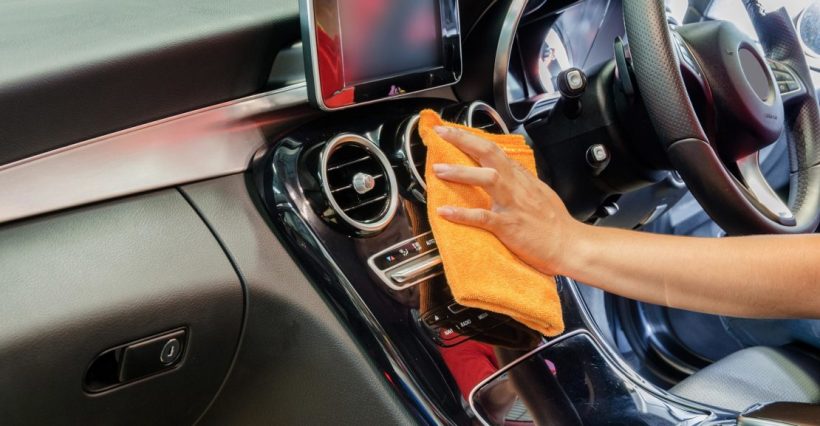
Source: carmaxea.com
Soap and water have been proven effective in killing the coronavirus and other viruses.
As such, use these cleaning staples to clean your vehicle interior after every use or once
a week.
Use a microfiber cloth or sponge to give your steering wheel, door handles, seat belts,
cup holders, light switches, and all knobs, buttons, and panels a thorough wipe-down.
Be careful not to use an overly wet or dripping cloth or sponge to avoid damaging
sensitive parts.
Also, remember to avoid adding bleach or hydrogen peroxide in your soap solution.
Although these cleaning agents are more effective in killing germs and viruses, they may
damage some interior components, especially the ones covered with or made of plastic
faux chrome.
Lastly, avoid using cleaning products that contain ammonia. Use them only for washing
the windows and mirrors.
4. Use the appropriate cleaning product for fabrics
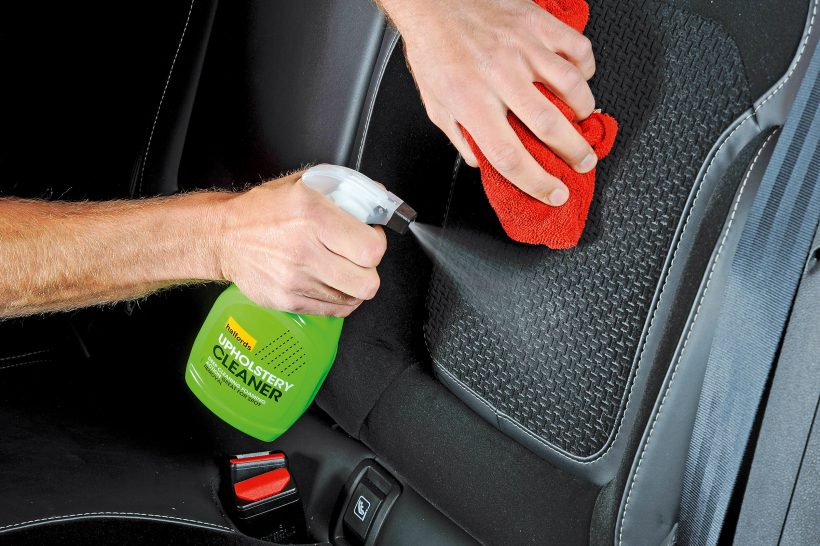
Source: autoexpress.co.uk
When cleaning the seats, keep in mind that not all fabrics are the same. This means that
not all products that work are safe for different types of materials.
Detergent-based cleaning products or DIY solutions are safe to use for cleaning leather
seats and other fixtures. Additionally, always use a microfiber cloth since it is soft and
won’t scratch the material.
If you are using a new cleaning product, spot-test it first on a hidden area to make sure
it is suitable for your leather seats. Apply a leather conditioner after cleaning the interior
to restore moisture.
For cleaning and disinfecting vinyl and synthetic interiors, avoid using products that
contain alcohol or bleach. You can get rid of germs and bacteria clinging to these
features and areas by using a soap-based solution.
5. Invest in car sanitization services
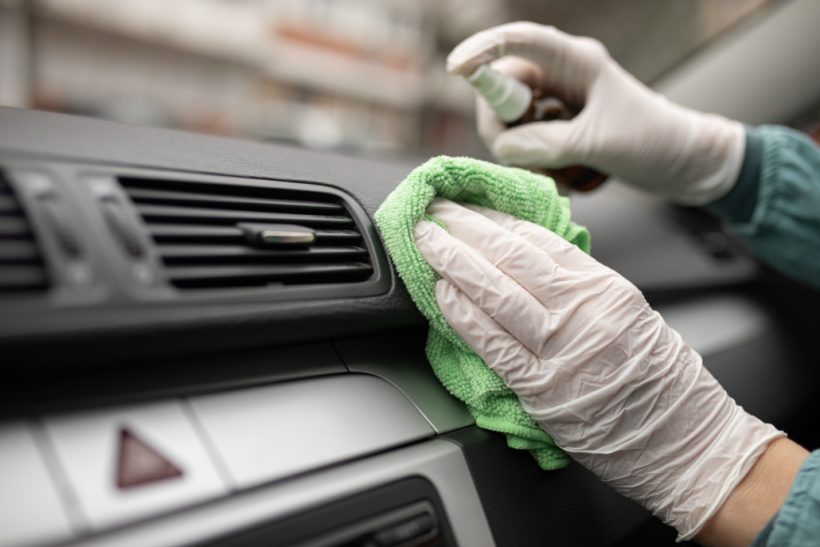
Source: tntservices.com
Finally, if you want your vehicle to be thoroughly clean and sanitized, bring it to a
the service center that offers car disinfecting services.
When you bring your ride for a car sanitization service, your vehicle will be cleaned,
vacuumed, and sanitized inside and out. This means that aside from the floor and seats,
the roof and other fixtures outside will be thoroughly scrubbed and tidied up.
Additionally, the team will disinfect, clean, and polish the car door and handles, glasses,
mirrors, and windows. They will also sanitize the dashboard, steering wheel, and other
areas and components that you frequently touch or handle.
Car maintenance experts will also clean the air conditioning vents and change the cabin
air filters. It is important to keep these features tidy and germ-free since they are prone
to collecting dust, pollen, and debris, which can encourage the growth of bacteria and
viruses inside your car.
Aside from being trained to clean and sanitize vehicles properly, car maintenance
technicians have the essential tools and equipment for getting the job done. They also
have a selection of cleaning and disinfecting products that are safe and suitable for
different car interior materials.
Disinfecting and cleaning your car after using it may likely be part of the “new normal.” Follow
these practices and tips and you will keep the coronavirus and other germs and viruses away
from your vehicle even after the pandemic is over.
